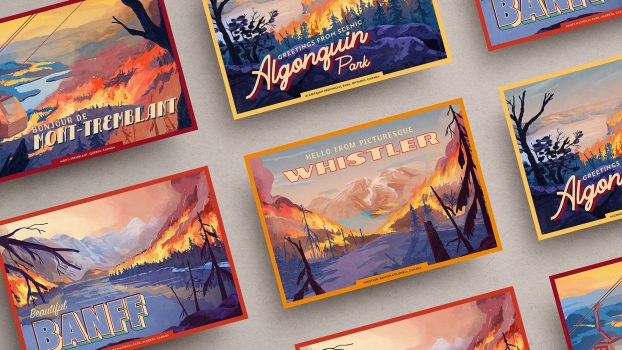Inspiration
Polar bears were first introduced in Coca-Cola’s print advertising in 1922, and remain one of the brand’s most loved icons. Because of its long history with the arctic bears, Coca-Cola has supported the World Wildlife Fund’s (WWF) research and conservation efforts to protect the animal’s natural habitat for the past five years.
Given how remote the Arctic is, most Canadians feel disconnected to the plight of the polar bear. However, research showed that environmental issues are top of mind for Canadians, thus providing Coke an opportunity to educate consumers on the realities of the bear’s degrading habitat.
Strategy
In 2011, Coca-Cola began housing all of its communications under a corporate program, “Coca-Cola Arctic Home.”
Last year, the brand raised awareness of the issues facing bears due to climate change by redesigning its iconic red cans to white and travelling to the Arctic to shoot a documentary.
This year, the aim was to build on the success of previous efforts, and help WWF achieve its goal of raising $10 million for the protection of the Last Ice Area – a region of the Arctic that is projected to retain its summer sea ice longer than any other area.
Coke wanted to bring this cause to Canadians’ doorsteps and inspire consumer action, including behavioural change and donations via purchases.
Execution
Coca-Cola and WWF brought the fragile arctic ecosystem to Canada via a temperature-controlled and interactive display (developed by Toronto-based Zulu Alpha Kilo with social media handled by Toronto-based Gravity Partners Limited), asking Canadians to pledge their support to help protect the natural habitat of the polar bear.
Inside the display stood sculptures of a mother and cub polar bear surrounded by ice that either melted or froze. When consumers pledged to raise awareness or reduce their carbon footprint via video, text or tweet, it reduced the temperature inside the display and kept the polar bears on solid ice.
The installation spent a week in Toronto’s Eaton Centre, Montreal’s Carrefour Laval and Vancouver’s Pacific Centre (Canadians could follow the installation via webcam), and was part of a larger campaign encompassing TV, cinema, social media, point-of-purchase and on-can messaging.
Results
Almost 100% of those who interacted with the display made a pledge to make a difference, with more than 7,000 Canadians doing so within the first week of launch. The installation also boosted brand affinity, with a 69% increase in favourable opinions of Coca-Cola and a 39% increase in purchase intent.
Arctic Home had an impact beyond the brand, with 61% of respondents saying they would like to support companies that target climate change, 55% personally wanting to make a lifestyle change to combat climate change and 43% wanting to learn more about the Arctic.
Coke will contribute $2 million over five years, as well as 5% of the proceeds from the sales of specially-marked products (up to $235,000) to the WWF.
Judge’s comment
“Coke engaged a nation with the use of a nationally relevant icon. [It demonstrated a] serious commitment to the cause with the right non-profit partnership in place.”
– Kim Finn, JWT ethos
Jump to:
Overall winner: Bell takes mental health out of the shadows
Stanfield’s exposes below-the-waist cancer
Koodo incites virtual volunteerism























